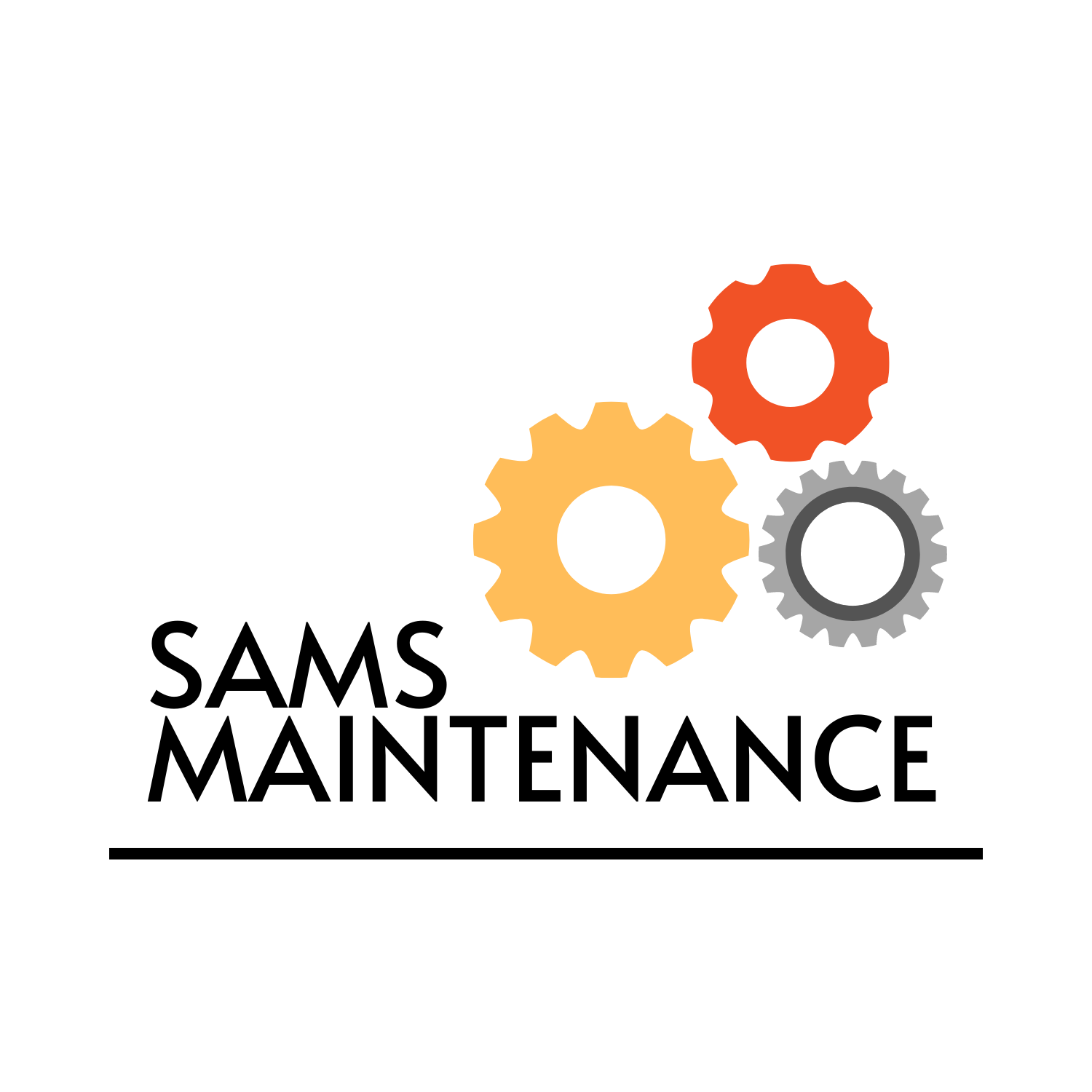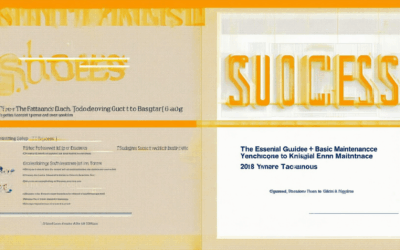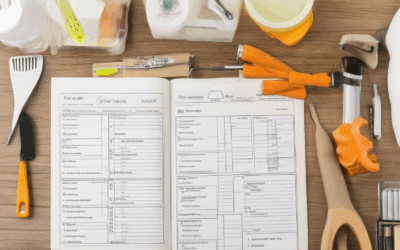Homeownership comes with its fair share of responsibilities, and mastering the art of home maintenance is crucial for keeping your property in prime condition. Whether you’re a seasoned homeowner or new to the game, elevating your home maintenance game can make a world of difference. One strategy that’s gaining traction is the 1% rule, a simple yet effective approach to staying ahead of potential issues before they escalate. By dedicating just 1% of your time weekly to routine checks and minor repairs, you can prevent costly problems down the line. But what exactly should you be doing? From inspecting appliances to addressing leaks early, there’s a range of essential tasks that every homeowner should prioritize. Discover proven strategies, explore the most critical items to monitor, and learn how to create a maintenance plan that works for you. With the right tools and resources, like apps designed for home repair tracking, you can streamline your efforts and ensure your home stays in excellent shape. Whether you’re looking to save money, extend your home’s lifespan, or simply enjoy peace of mind, investing time in home maintenance is a smart move. Let’s dive into the details and uncover the secrets to maintaining your home like a pro.
Key Takeaways
- Develop a Structured Home Maintenance Plan: Assess your home’s condition, organize tasks by frequency, budget accordingly, and review regularly to keep everything in order.
- Utilize Tools and Apps: Track tasks efficiently with digital tools to stay organized and avoid oversights.
- Prioritize Tasks Smartly: Address critical issues first to prevent escalation and ensure your home stays in top shape.
- Engage Professionals When Necessary: Safeguard your home by calling in experts for tasks beyond your skill level.
- Schedule Regular Checks: Tailor maintenance schedules to your lifestyle and adjust as needed for ongoing success.
- Break Down Maintenance by Frequency: Cover daily, weekly, monthly, seasonal, and annual tasks for comprehensive care.
- Optimize Energy Efficiency: Enhance performance and lower costs by checking for leaks and inefficiencies.
- Prepare for Emergencies: Have contacts ready to handle unexpected issues swiftly.
- Tackle Monthly Tasks: Keep gutters clean, inspect HVAC systems, and test safety devices to maintain comfort and security.
- Handle Seasonal Responsibilities: Prune plants, inspect windows, and prepare outdoor spaces for changing conditions.
- Conduct Annual Inspections: Check roofs, plumbing, and major appliances to spot issues early.
- Manage Semi-Annual Tasks: Ensure foundational stability, service water systems, inspect fireplaces, and maintain outdoor lighting.

What is the 1% Rule for Home Maintenance?
The 1% rule for home maintenance is a simple yet effective strategy to budget for unexpected repair costs. Here’s a breakdown:
- 1% Rule Calculation: Set aside 1% of your home’s purchase price annually for maintenance. This covers repairs, replacements, and unexpected issues.
- Example: For a $300,000 home, 1% is $3,000 annually or approximately $250 monthly.
- Why It Matters: Homes require regular upkeep, and the 1% rule helps prepare for unforeseen expenses without overwhelming you financially.
### Additional Considerations
- Appliance Breakdown: Major appliances like HVAC systems or refrigerators often fail, requiring immediate attention. The 1% rule helps cover these costs.
- Emergency Preparedness: Natural disasters or accidents can lead to costly repairs. Having a maintenance fund eases the financial burden during crises.
- Customizing Your Budget: Adjust the 1% based on your home’s unique needs. For example, homes with septic tanks or specialized systems may require more funds.
### How to Create a Maintenance Budget
- Track Expenses: Keep a record of all maintenance-related costs to better understand your spending habits.
- Prioritize Repairs: Address urgent issues first, such as leaky pipes or electrical problems, before moving on to routine upgrades.
- Consider Insurance: Some home insurance policies cover certain maintenance costs. Review your policy to maximize benefits.
For more insights and tools to manage your home maintenance budget, visit our maintenance resources . Also, explore tips and guides on HomeAdvisor and Fixer Upper for additional inspiration and practical advice.
What Home Maintenance Should I Be Doing?
Home maintenance is essential to keep your living space comfortable, safe, and energy-efficient. Here’s a comprehensive guide to tasks you should tackle throughout the year:
Seasonal Tasks
Spring Maintenance
- Clean and clear gutters, removing debris and checking for damage.
- Prune trees and shrubs to maintain shape and health.
- Inspect and clean outdoor furniture and grills.
- Check and service your lawn mower for the upcoming season.
- Learn more about lawn care essentials .
Summer Maintenance
- Test and maintain your pool or hot tub, adjusting water chemistry as needed.
- Clean and store outdoor furniture to prevent rust or damage.
- Inspect and repair sprinkler systems to ensure even water distribution.
- Service your air conditioning unit to ensure efficiency and longevity.
- Explore AC maintenance tips .
Fall Maintenance
- Rake leaves and clean up debris from yards and gardens.
- Inspect your roof for missing shingles or damage.
- Clear out gutters and ensure they’re free from blockages.
- Examine windows and doors for cracks or damage, then seal as needed.
- Discover window maintenance tips .
Winter Maintenance
- Clear snow and ice from driveways, walks, and steps.
- Inspect the roof for ice dams and address them promptly.
- Chimney inspection and cleaning to prevent fire hazards.
- Protect pipes from freezing by wrapping them or insulating.
- Learn about heating system maintenance .
Ongoing Year-Round Tasks
Foundation and Structural Checks
- Inspect foundation for cracks or shifting and repair as needed.
- Replace old caulk or sealant around windows and doors.
- Examine garage doors for wear and tear and adjust as necessary.
Appliance Care
- Servicing major appliances like washers, dryers, and stoves regularly.
- Checking and replacing water filters in your sink and dishwasher.
- Testing smoke detectors and carbon monoxide detectors annually.
Electrical Systems
- Updating older electrical outlets and switches.
- Inspecting wiring for signs of wear or damage in older homes.
Exterior Surfaces
- Inspecting siding, fences, and decks for damage or rot.
- Painting or staining surfaces as needed to maintain curb appeal.
Landscape Maintenance
- Pruning trees and shrubs to remove dead branches.
- Applying fresh mulch to beds to retain soil moisture.
- Dividing perennials and cutting back annuals in the fall.
By staying on top of these maintenance tasks, you’ll extend the life of your home, save money on repairs, and ensure a safe and comfortable living environment year-round.

What is the Most Important Item for Home Maintenance?
The most critical aspect of home maintenance revolves around ensuring the proper functioning of essential systems and components. Regular checks and maintenance of key systems can prevent minor issues from escalating into major, costly repairs. Here’s a breakdown of the primary areas to focus on:
- HVAC System: A well-maintained heating, ventilation, and air conditioning (HVAC) system ensures comfort year-round. Annual inspections, filter changes, and ductwork cleaning are vital for efficiency and energy savings.
- Plumbing System: Leaky pipes, clogged drains, and outdated fixtures can lead to water damage and waste. Regular inspections, pipe replacements, and fixture upgrades are essential for functionality and safety.
- Electrical System: Outdated wiring, faulty switches, and overloaded circuits pose serious hazards. Periodic inspections, circuit breaker testing, and electrical panel updates help maintain safety and prevent fires.
- Roofing and Exterior: A healthy roof and exterior prevents water infiltration and structural damage. Annual inspections, gutter cleaning, and exterior painting ensure longevity and protection against weather elements.
Maintaining these systems not only extends the life of your home but also enhances its value and energy efficiency. For professional guidance and resources, visit our home maintenance experts to learn more about keeping your property in prime condition.

How to Create a Home Maintenance Plan
To effectively manage your home maintenance, follow these organized steps:
- Assess the Current Condition
- Categorize Maintenance Tasks
- Create a Comprehensive Checklist
- Develop a Budget
- Utilize Tools and Apps
- Prioritize Tasks
- Identify When Professional Help is Needed
- Store and Regularly Review Your Plan
Start by walking through every room and area of your home. Identify areas that require attention, such as peeling paint, leaky fixtures, or damaged flooring.
Organize tasks into daily, weekly, monthly, seasonal, and annual activities. For example, daily tasks might include checking for leaks, while monthly tasks could involve deep cleaning the bathroom tiles.
Make a list of each task, noting its frequency and estimated cost. Include both routine chores and major projects, such as gutter cleaning or HVAC inspections.
Estimate the costs for each task and categorize them. Set aside a portion of your budget for unexpected repairs. Consider both labor costs and material expenses.
Use digital tools or apps to track your tasks and deadlines. This can help you stay organized and ensure nothing is overlooked.
Rank tasks based on urgency and impact. Address critical issues first, such as fixing a leaky roof, before they escalate into more severe problems.
Recognize tasks that are unsafe or require specialized skills, like electrical wiring or plumbing. Know when to contact professionals for assistance.
Keep your maintenance plan accessible, whether in a binder or digital file. Schedule regular reviews to update the plan as needed, especially after significant life changes or home improvements.
By following these steps, you can create a tailored home maintenance plan that ensures your property remains in excellent condition, saving time and money in the long run.
How to Create a Maintenance Plan
To effectively create a maintenance plan, follow these organized steps:
- Define the Purpose: Identify what you aim to maintain. Whether it’s a vehicle, property, or equipment, knowing the scope helps tailor the plan.
- Schedule Regular Checks: Assign frequencies to each task. For example, monthly checks for minor tasks and annual reviews for major systems like HVAC or plumbing.
- Prioritize Tasks: Categorize maintenance by urgency. Address critical issues immediately, such as HVAC failures, while less urgent tasks like lawn care can be scheduled less frequently.
- Gather Tools and Materials: Compile a toolkit with essentials like ladders, screwdrivers, and replacement parts. Organize them for quick access during maintenance sessions.
- Document Findings: Keep a logbook to record each maintenance activity. Note any issues, actions taken, and future follow-ups to track progress and identify recurring problems.
- Budget Considerations: Estimate costs for each task. Determine whether tasks can be handled DIY-style or require professional assistance, adjusting priorities based on budget constraints.
- Stay Informed: Subscribe to maintenance guides, follow industry blogs, and consult manufacturer manuals for updated procedures and best practices.
- Review and Update Periodically: Reassess the plan every six months to adapt to changing circumstances and evolving needs. Adjust tasks and frequencies as necessary.
- Involve Professionals When Needed: For complex tasks beyond your expertise, engage licensed technicians to ensure safety and effectiveness.
- Consider Environmental Factors: Account for local weather conditions and seasonal changes that may impact maintenance requirements, such as roof inspections after heavy storms.
- Set Review Intervals: Schedule regular reviews aligned with the most frequent maintenance tasks, using reminders to stay on track.
- Optimize Energy Efficiency: During maintenance, check for energy leaks and inefficient components to enhance performance and reduce long-term costs.
- Emergency Preparedness: Establish contacts for unexpected issues, ensuring quick responses to minimize downtime and damage.
This structured approach ensures a comprehensive and consistent maintenance routine, promoting longevity and efficiency for whatever you’re maintaining.

How Often Should Home Maintenance Tasks Be Performed?
Home maintenance is crucial for preserving the value and safety of your property. Here’s a breakdown of how frequently various tasks should be addressed:
- Monthly Tasks
- Check and clean gutters and downspouts.
- Test smoke detectors and carbon monoxide alarms.
- Inspect and clean HVAC vents and ductwork.
- Examine grout and sealant around tiles for cracks.
- Bathe pets or clean pet areas regularly.
- Seasonal Tasks
- Change HVAC filters every 3–6 months (quarterly).
- Prune trees and shrubs twice a year.
- Inspect windows and doors for drafts (seasonally).
- Clean and store outdoor furniture seasonally.
- Annual Tasks
- Inspect the roof for missing shingles or damage.
- Service heating and cooling systems annually.
- Check plumbing for leaks and drain clogs.
- Inspect major appliances like refrigerators and ovens.
- Semi-Annual Tasks
- Examine the foundation for cracks or shifts.
- Service water softeners and filtering systems.
- Check fireplaces and chimneys for damage.
- Inspect outdoor lighting and electrical systems.
Conclusion: Regular home maintenance varies depending on the task. Monthly and seasonal chores ensure minor issues don’t escalate, while annual and semi-annual inspections catch bigger problems early. Consistency is key to maintaining a safe and comfortable living environment.




0 Comments